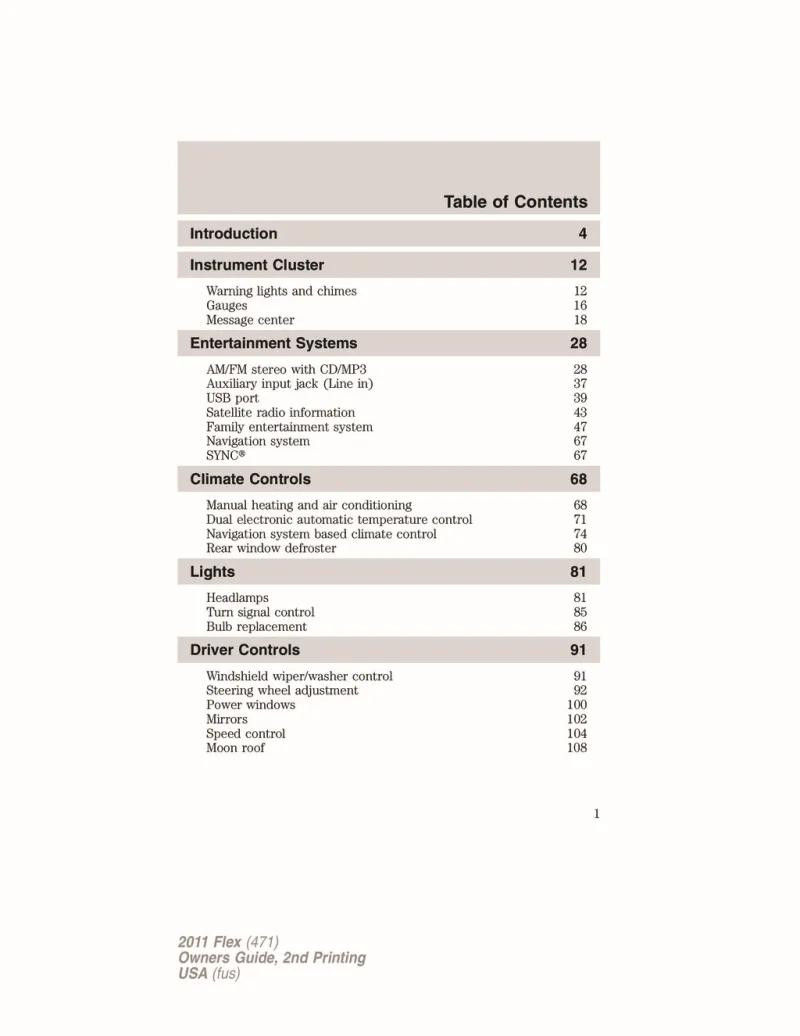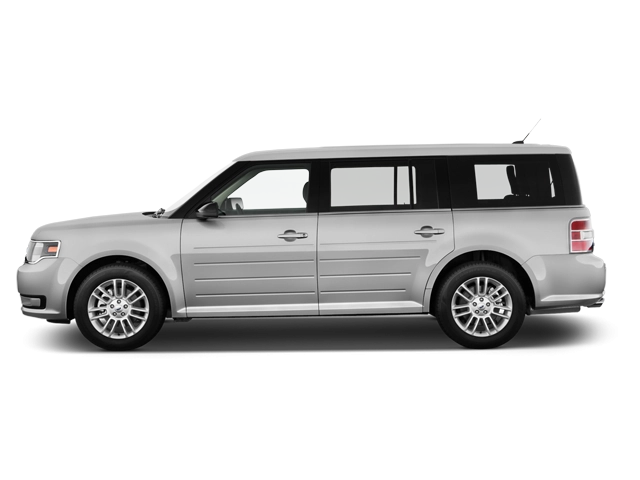2011 Ford Flex Owner's Manual

Table of Contents
2011 Ford Flex Overview
Introduction
The 2011 Ford Flex stands as a bold statement in the world of crossovers, combining a strikingly modern exterior with a spacious and versatile interior. Designed for families and adventurers alike, the Flex showcases Ford's commitment to versatility, comfort, and cutting-edge technology. With its distinctive boxy silhouette and multiple seating configurations, it provides a refreshing alternative to typical SUVs, making it an ideal choice for those seeking both style and practicality.
Powertrains
The 2011 Ford Flex offers two robust powertrain options that cater to various driving needs. The standard engine is a 3.5-liter V6, producing 262 horsepower and 248 lb-ft of torque, paired with a six-speed automatic transmission. This configuration ensures a smooth driving experience and decent fuel efficiency. For those who desire a more spirited drive, the available 3.5-liter EcoBoost V6 engine delivers an impressive 355 horsepower and 350 lb-ft of torque, providing a thrilling blend of performance and efficiency while maintaining the Flex's smooth ride.
Trims
The Flex comes in three well-equipped trims: SE, SEL, and Limited. The base SE trim includes essential features such as keyless entry, tri-zone climate control, and a premium sound system. Stepping up to the SEL trim adds upgrades like a rearview camera, touch-screen navigation, and an upgraded audio system, while the top-of-the-line Limited trim offers luxury features such as leather upholstery, heated seats, and advanced safety technologies, ensuring a comprehensive driving experience.
Features
Inside, the 2011 Ford Flex impresses with its spacious cabin, accommodating up to seven passengers comfortably. The sliding second-row seats and a split-folding third row create adaptable cargo space for all your needs. Additionally, the Flex is equipped with a range of technological conveniences, including Ford's SYNC infotainment system, Bluetooth connectivity, and available rear-seat entertainment options, making it a family-friendly choice. Advanced safety features, such as stability control and multiple airbags, further enhance its appeal.
Owner's Manual
The 2011 Ford Flex comes with a detailed owner's manual that serves as an indispensable guide for both new and experienced owners. The manual includes vital information on vehicle maintenance, operating features, troubleshooting tips, and safety guidelines to ensure optimal performance and longevity of the vehicle. It serves as a handy reference, allowing owners to fully enjoy all the benefits that their Ford Flex has to offer.
User manual download
The Ford Flex owner manual for the 2011 model year is to be found in PDF downloadable format on this page. The owner manual for the model year 2011 is free and in English, but the repair manuals are usually not easy to get and may cost more.
Manual Questions
Fill the form below and someone will help you!

